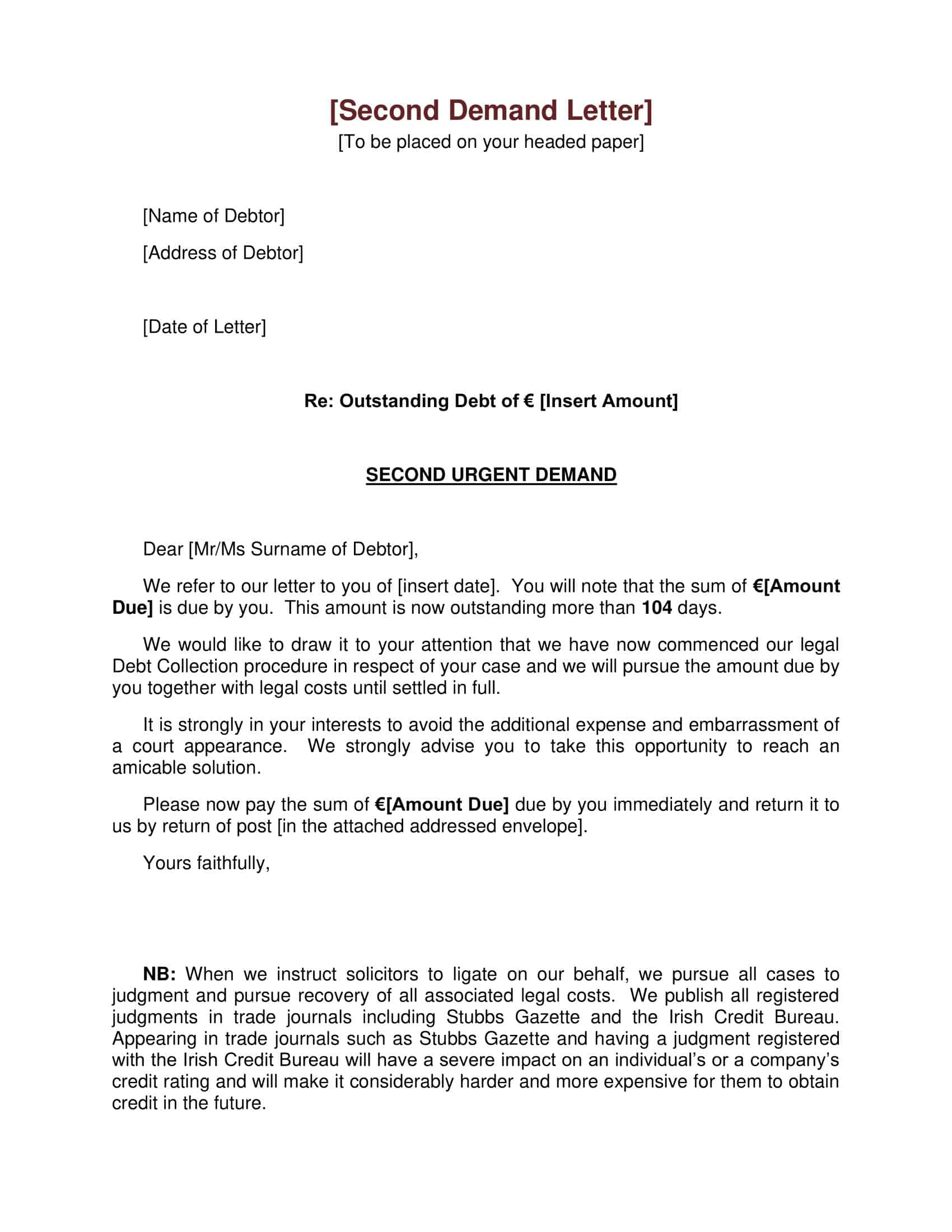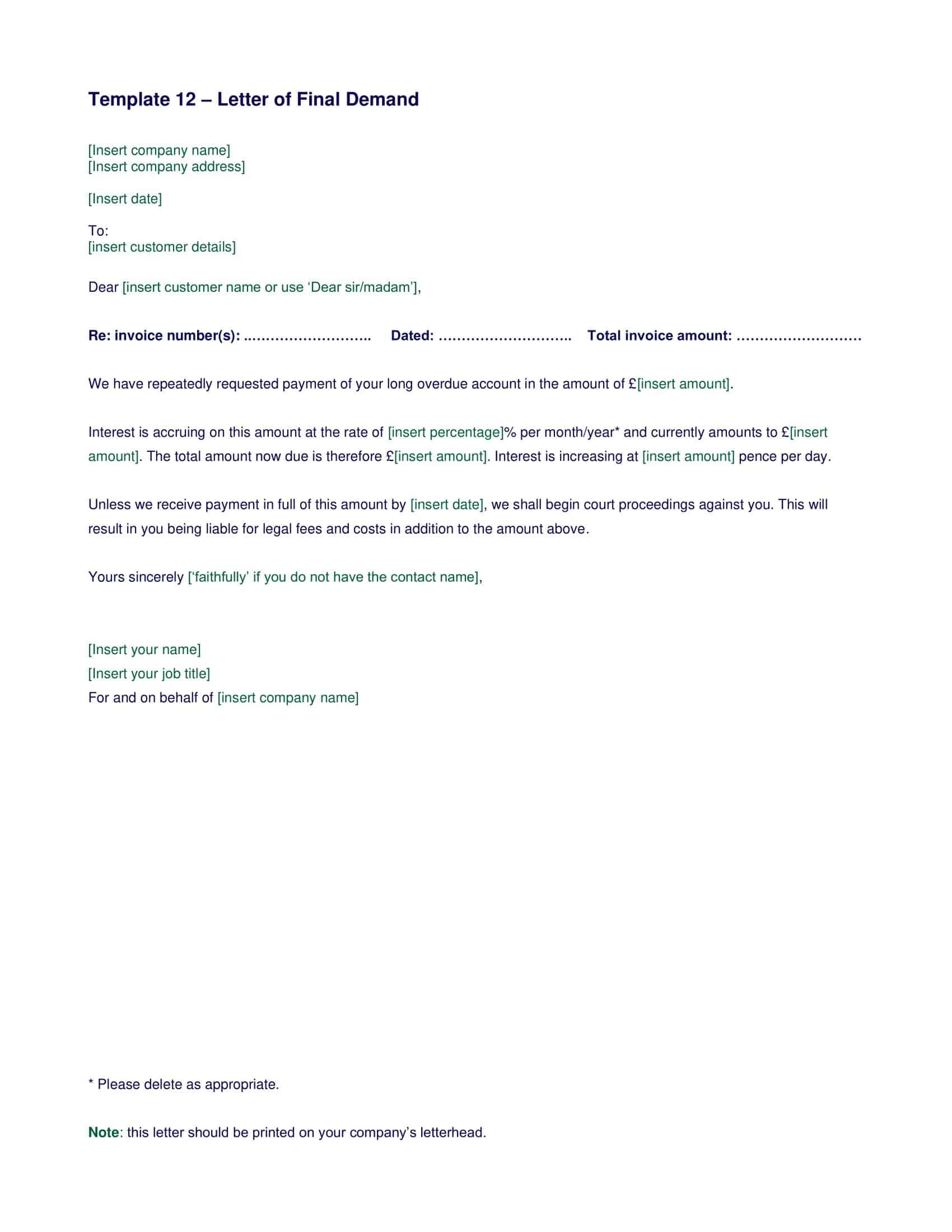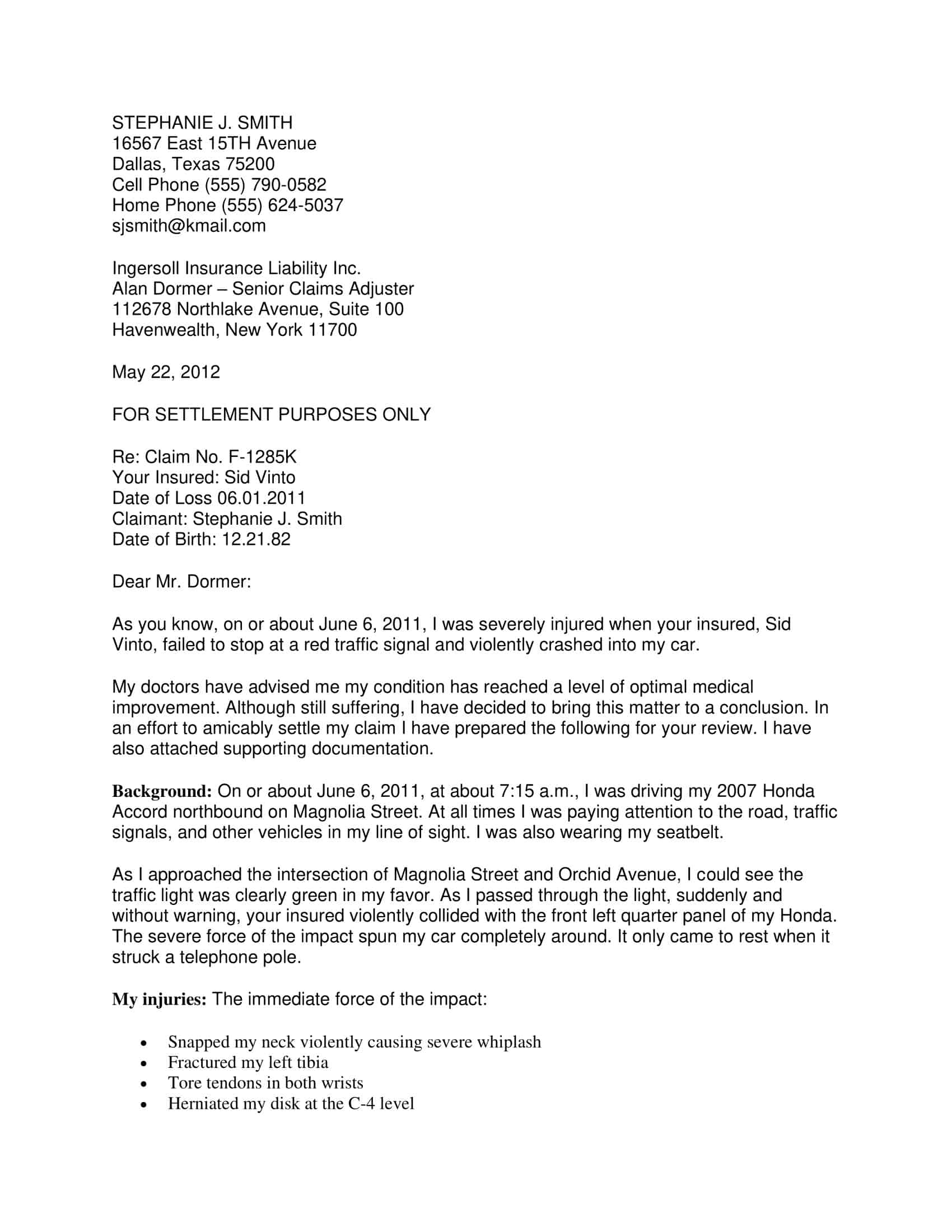A demand letter is a written document that is used to demand payment or action from an individual or a company. It is a formal and legally binding letter that states the recipient’s obligation and the consequences if the obligation is not met.
Demand letters are commonly used in civil legal disputes and can serve as a precursor to legal action if the recipient fails to respond or comply. In this article, we will cover the basics of demand letters, including what they are, why they are used, and how to write an effective demand letter.
Table of Contents
Demand Letter Templates
Demand Letter Templates are professionally crafted documents designed to convey a formal request for action or resolution from one party to another. These templates serve as a standardized framework that individuals or organizations can utilize when seeking legal remedies, reimbursement, compensation, or compliance with certain obligations.
Demand Letter Templates are typically employed in various contexts, such as business disputes, contract breaches, personal injury claims, property damage, debt collection, and other situations where one party believes they have been wronged or seeks to assert their rights. These templates provide a structured format that outlines the necessary information and legal arguments to effectively communicate the sender’s demands.
A well-crafted Demand Letter Template comprises several essential elements. Firstly, it includes a clear and concise statement of the sender’s identity, their purpose for writing the letter, and the specific demands they are making. This section often highlights the relevant legal basis for the claims being made, referencing applicable statutes, regulations, or contractual obligations.
When To Send Demand Letters

Demand letters are typically sent when a party is seeking payment or some other form of action from another party, and all other attempts to resolve the issue have been unsuccessful. These letters are most commonly used in civil legal disputes and can serve as a precursor to legal action.
Some common reasons for sending a demand letter include non-payment of debts, breach of contract, and disputes over the return of security deposits. Before sending a demand letter, it is important to consider the specific circumstances of the dispute and to fully understand the legal requirements and procedures involved. If the recipient of the demand letter fails to respond or comply, the sender may then choose to escalate the matter to a court of law.
What to Include in a Demand Letter
A demand letter should be clear, concise, and direct in stating the recipient’s obligation and the consequences if it is not met. The following information should be included in a demand letter:
Identification of the sender and recipient: The demand letter should clearly state the names and addresses of both the sender and the recipient.
Description of the dispute: The demand letter should provide a brief description of the dispute, including the nature of the obligation and the specific actions that the recipient is required to take.
Demand for payment or action: The demand letter should state the specific amount or action that the recipient is required to take, and the deadline for compliance.
Consequences of non-compliance: The demand letter should clearly state the consequences of non-compliance, such as legal action or collection efforts.
Supporting documentation: The demand letter should include any relevant supporting documentation, such as invoices, contracts, or receipts.
Signature and date: The demand letter should be signed and dated by the sender.
Types of demand letter
There are several types of demand letters, each serving a specific purpose and being used in different types of legal disputes. Some of the most common types of demand letters include:
Payment demand letter: A payment demand letter is used to demand payment for a debt or an outstanding bill. This type of demand letter typically includes a detailed description of the debt, the amount owed, and the deadline for payment.
Breach of contract demand letter: A breach of contract demand letter is used to demand performance or compensation for a breach of contract. This type of demand letter typically includes a description of the contract, the specific breach, and the remedy sought.
Return of security deposit demand letter: A return of security deposit demand letter is used to demand the return of a security deposit after the termination of a lease agreement. This type of demand letter typically includes a description of the lease agreement, the security deposit, and the reason for the demand.
Demand for repair or replacement: A demand for repair or replacement is used to demand that a product be repaired or replaced due to a defect or failure. This type of demand letter typically includes a description of the product, the problem, and the remedy sought.
Cease and desist demand letter: A cease and desist demand letter is used to demand that an individual or company stop engaging in an activity that is causing harm or is illegal. This type of demand letter typically includes a description of the activity, the harm caused, and the demand for cessation.
What to Do When You Receive a Demand Letter?
If you receive a demand letter, it is important to take the following steps:
Read the letter carefully: Read the letter thoroughly and make sure you understand the nature of the demand, the reason for the demand, and the remedy sought.
Consult with an attorney: If the demand is serious or involves a legal dispute, it is important to consult with an attorney to understand your rights and obligations, and to determine the best course of action.
Respond in a timely manner: If the demand letter includes a deadline for response, it is important to respond before that deadline. Failure to respond in a timely manner may result in additional legal action.
Consider the demand: Evaluate the demand and determine whether it is reasonable and justified. If the demand is reasonable, it may be in your best interest to settle the matter and avoid further legal action.
Negotiate a settlement: If the demand is reasonable, consider negotiating a settlement with the other party. This can help to resolve the matter quickly and efficiently, and avoid the cost and uncertainty of legal action.
Take legal action: If the demand is not reasonable, or if negotiations are unsuccessful, it may be necessary to take legal action to protect your rights and interests.
How To Write a Demand Letter
Here is a step-by-step guide on how to write a demand letter:
Identify the recipient
Determine the recipient of the demand letter, which may be an individual, a company, or a government agency.
Clearly state the demand
In the first paragraph, clearly state the demand and the reason for the demand. Make sure that the demand is specific and concise.
Provide background information
In the following paragraphs, provide background information to support the demand. This may include relevant facts, laws, and contracts that support your position.
Offer a solution
Offer a solution to the problem, such as payment of a debt, return of property, or correction of a wrong. Be specific about the remedy sought and the amount of time the recipient has to respond.
Be professional
Make sure that the demand letter is professional and free of threatening language. Avoid using aggressive or hostile language that may make the recipient less likely to respond favorably.
Include supporting documentation
If possible, include any supporting documentation, such as receipts, invoices, or contracts, to support your demand.
End with a deadline
End the demand letter by setting a deadline for response. Give the recipient a reasonable amount of time to respond, but make sure the deadline is firm.
Keep a copy
Keep a copy of the demand letter for your records.
Send the letter
Send the demand letter by certified mail, return receipt requested, to ensure that it is received and to have proof of delivery.
It is important to understand that a demand letter is a formal request for relief and should be taken seriously. Make sure that the demand letter is clear, concise, and professional, and that it provides the recipient with enough information to understand the demand and the reason for the demand. If the recipient fails to respond, or if the demand is not satisfied, it may be necessary to take further legal action.
FAQs
Why send a demand letter?
A demand letter is often sent to try to resolve a dispute or to demand payment without having to go to court. The demand letter gives the recipient an opportunity to respond and resolve the issue before a lawsuit is filed.
Who can receive a demand letter?
A demand letter can be sent to an individual, a company, or a government agency.
What happens after a demand letter is sent?
After a demand letter is sent, the recipient may respond by paying the debt, correcting the wrong, or negotiating a solution. If the recipient does not respond or if the demand is not satisfied, it may be necessary to take further legal action.
How do I send a demand letter?
A demand letter should be sent by certified mail, return receipt requested, to ensure that it is received and to have proof of delivery.
What happens if the recipient of the demand letter does not respond?
If the recipient of the demand letter does not respond, it may be necessary to take further legal action. This may include filing a lawsuit, obtaining a judgment, and collecting the debt through wage garnishment or seizure of assets.
Can a demand letter be used in court?
Yes, a demand letter can be used in court as evidence of the demand and the recipient’s refusal to comply. However, a demand letter alone is not sufficient to win a lawsuit.
How long should I wait after sending a demand letter before taking legal action?
The length of time to wait after sending a demand letter before taking legal action can vary depending on the circumstances. It is typically a good idea to give the recipient a reasonable amount of time to respond, usually about two weeks to a month.
Is it necessary to have an attorney write a demand letter?
While it is not necessary to have an attorney write a demand letter, it is often helpful to consult with an attorney to ensure that the demand letter is legally sufficient and to determine the best course of action if the demand is not satisfied.
Can a demand letter be sent for a small claims case?
Yes, a demand letter can be sent for a small claims case. Small claims court is often used to resolve disputes over amounts less than a certain amount, usually $5,000 to $10,000, depending on the state.
Can a demand letter be sent for a debt collection?
Yes, a demand letter can be sent for debt collection. A debt collection demand letter is a formal request for payment of a debt that is past due. The demand letter should include the amount of the debt, the reason for the debt, and a demand for payment.











































![Free Printable Friendly Letter Templates [PDF, Word, Excel] 1st, 2nd, 4th Grade 1 Friendly Letter](https://www.typecalendar.com/wp-content/uploads/2023/05/Friendly-Letter-150x150.jpg 150w, https://www.typecalendar.com/wp-content/uploads/2023/05/Friendly-Letter-1200x1200.jpg 1200w)
![43+ Printable Leave of Absence Letter (LOA) Templates [PDF, Word] / Free 2 Leave of Absence Letter](https://www.typecalendar.com/wp-content/uploads/2023/01/Leave-of-Absence-Letter-150x150.jpg 150w, https://www.typecalendar.com/wp-content/uploads/2023/01/Leave-of-Absence-Letter-1200x1200.jpg 1200w)
![%100 Free Hoodie Templates [Printable] +PDF 3 Hoodie Template](https://www.typecalendar.com/wp-content/uploads/2023/05/Hoodie-Template-1-150x150.jpg)
